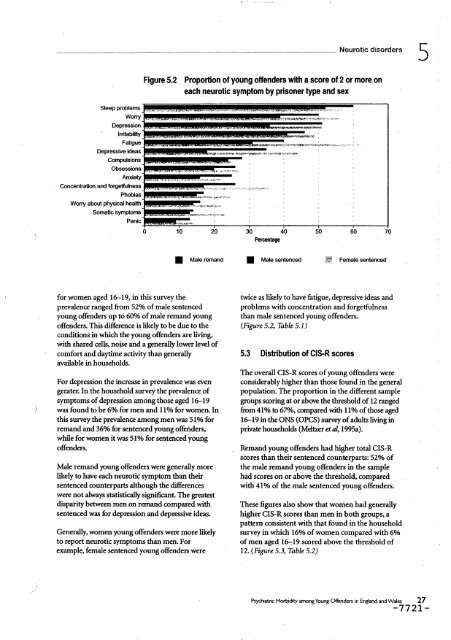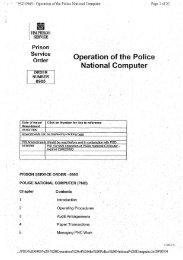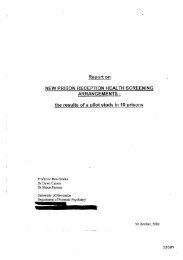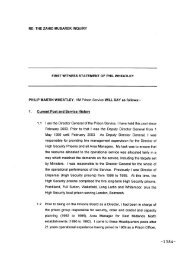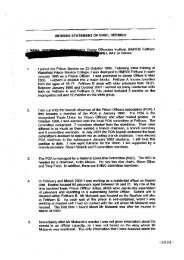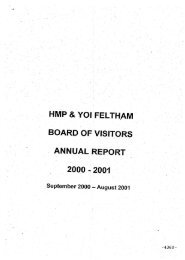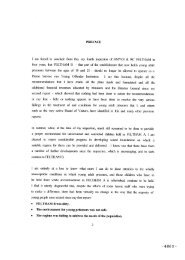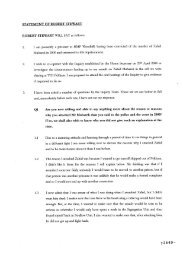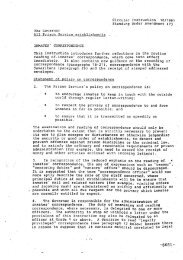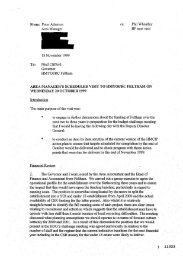Neurotic disorders
Neurotic disorders
Neurotic disorders
You also want an ePaper? Increase the reach of your titles
YUMPU automatically turns print PDFs into web optimized ePapers that Google loves.
<strong>Neurotic</strong> <strong>disorders</strong> 5<br />
• Maleremand • Malesentenced ,_,i_ Femalesentenced<br />
for women aged 16-19, in this survey the<br />
twice aslikelyto havefatigue, depressiveideas and<br />
prevalence ranged from 52% of male sentenced<br />
problems with concentration and forgetfulness<br />
young offendersup to 60% of male remand young than male sentenced young offenders.<br />
offenders. This difference is likelyto be due to the (Figure5.2, Table5.1)<br />
conditions in which the young offenders are living,<br />
with shared cells,noise and a generallylower levelof<br />
comfortand daytimeactivitythan generally 5.3 Distributionof ClS-R scores<br />
availablein households.<br />
The overall CIS-R scores of young Offenderswere<br />
For depression the increasein prevalence was even considerably higher than those found in the general<br />
greater. In the household survey the prevalence of population. The proportion in the different sample<br />
symptoms of depression among those aged 16-19 groups scoring at or abovethe threshold of 12ranged<br />
) was found to be 6%for men and 11% forwomen. In from 41%to 67%,comparedwith 11%of those aged<br />
this survey the prevalenceamong men was 51%for 16-19 in the ONS (OPCS) survey of adultslivingin<br />
remand and 36%for sentenced young offefiders, privatehouseholds (Mdtzer et al, !995a).<br />
while for women it was 51% for sentenced young<br />
offenders.<br />
Remand young offenders had higher total CIS-R<br />
scores than their sentenced counterparts: 52%of<br />
Male remand young offenders were generally more the male remand young offenders in the sample<br />
likelyto have each neurotic symptom than their had scores on or above the threshold, compared<br />
sentenced counterparts although the differences with 41% of the male sentenced young offenders.<br />
were not alwaysstatisticallysignificant. The greatest<br />
disparity between men on remand compared with These figures also show that women had generally<br />
sentenced was for depression and depressiveideas, higher CIS-R scores than men in both groups, a<br />
pattern consistent with that found in the household<br />
Generally,women young offenderswere more likely survey in which 16%of womencompared with 6%<br />
to report neurotic symptoms than men. For<br />
of men aged 16-_19scored above the threshold of<br />
example, femalesentenced young offenders were 12. (Figure5.3, Table5.2)<br />
PsychiatricMorbidityamongYoungOffendersin EnglandandWales 27<br />
-7721 -


